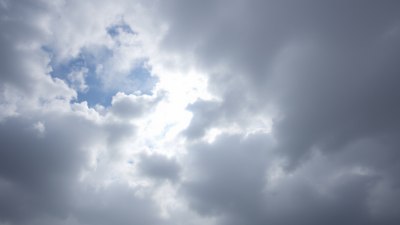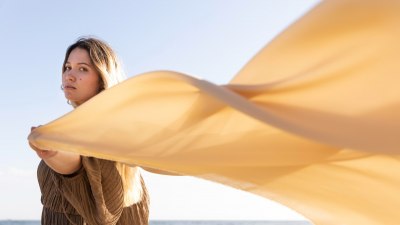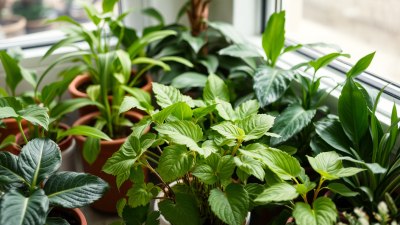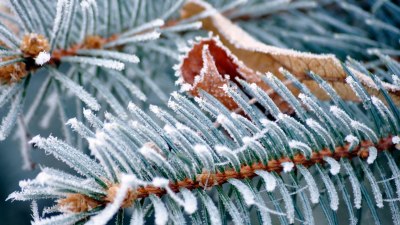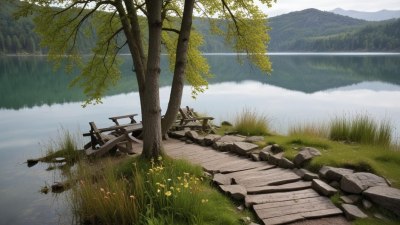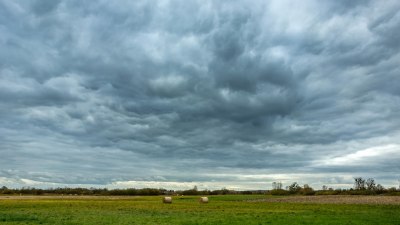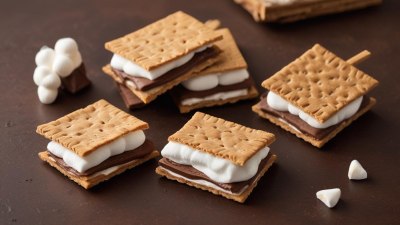How Sidewalk Chalk Art Becomes a Race Against Time and Thermodynamics
Explore how sidewalk chalk art battles environmental changes and thermodynamics, transforming temporary creativity into an ephemeral experience.

Sidewalk chalk art has fascinated people of all ages for generations, serving as a vibrant canvas for creativity on the urban pavement. Although it offers an accessible medium for self-expression, the very nature of chalk art is ephemeral, constantly challenged by environmental factors and the inevitable laws of thermodynamics. This interplay creates a unique tension where artists race against time and nature to complete, display, and preserve their works before they fade away.
The Ephemeral Medium of Sidewalk Chalk
Sidewalk chalk is essentially composed of compressed calcium carbonate or calcium sulfate, formed into sticks that lend themselves beautifully to vibrant colors and easy application on rough surfaces like concrete. Its texture allows artists to layer colors, blend shades, and create intricate details that are impressive given the rough canvas. However, unlike paintings on traditional mediums such as canvas or wood, chalk art is transient by design, vulnerable to environmental wear and physical disruption.
Its temporary nature embodies a profound artistic statement about impermanence and the fleeting quality of moments in life. The contrast between vivid creation and the inevitability of erasure stresses the philosophy of embracing the present and finding joy in transient beauty.
Environmental Influences: The First Adversaries
Several environmental factors contribute to the gradual deterioration of chalk art, initiating the race against time. The most immediate and impactful is weather, particularly precipitation. Rain dissolves chalk’s mineral particles, washing them away with water runoff and breaking down the visible pigments. Even a morning dew or light drizzle can start the fading process, which continues unabated with heavier rainfall.
Wind is another factor, carrying dust and debris that abrasively scrub the chalk surface or scour the chalk grains themselves, dulling the image. Sunlight plays a dual role: while necessary for viewing the art with its full vibrancy, ultraviolet (UV) radiation from the sun can cause pigments, especially organic dyes, to fade or chemically break down. Moreover, heat impacts the chalk’s adherence to the pavement, with rising temperatures inducing expansion and contraction of the surface, leading to small fractures and flaking.
Thermodynamics and Its Subtle Yet Powerful Role
Thermodynamics, the branch of physics that deals with heat and energy transfer, underpins many subtle processes that affect sidewalk chalk art. The pavement itself absorbs solar radiation during the day, increasing surface temperature significantly above ambient air temperature. This heat then dissipates slowly into the air or subsurface layers at night, causing cyclical thermal expansion and contraction.
These mechanical stresses cause microcracking in the concrete and can dislodge chalk particles that are marginally embedded into the surface pores. Additionally, temperature gradients create small air currents and changes in humidity as moisture evaporates, which further accelerates the drying and degradation of chalk pigments.
The Science Behind Chalk Pigment Fading
Most chalk pigments are inorganic mineral-based colors mixed with small amounts of binder compounds. Over time, these pigments undergo photodegradation due to exposure to light, primarily UV. The energy from photons breaks chemical bonds within the molecules of the pigments, altering their structure and causing colors to fade or change hue. This is why blues and reds often appear less vibrant after prolonged sun exposure.
Binder compounds, which hold pigment particles together, also degrade under thermal and chemical stresses. This results in a loosening of the pigment matrix and more susceptibility to mechanical removal from the sidewalk’s surface by abrasion or rainfall. Consequently, the combined effects of photochemical reactions and thermal stress expedite the erasure of chalk art.
A Race Against Time: The Artist's Challenge
For artists, the natural laws present a formidable challenge. Speed and timing become critical factors. Successful sidewalk artists often work swiftly to maximize their window of maximum vibrancy and visibility before degradation sets in. Many choose early morning or late afternoon to avoid midday heat and direct sun, preserving pigment longevity.
Strategic selection of weather conditions is crucial. Dry days with moderate temperatures and low wind provide the best opportunity to create lasting pieces. Some artists take advantage of forecast data to plan creation immediately before a period of favorable weather, effectively launching their work into an ideal environment for display.
Techniques to Extend Chalk Art Longevity
Despite its natural limitations, artists have developed various strategies to mitigate environmental degradation and prolong their chalk art’s visibility. One common technique is layering, where multiple coats of chalk are applied to increase pigment density and enhance adherence to the pavement surface. This approach improves resistance to light abrasion and initial water exposure.
Another method involves partial sealing. Some artists lightly spray water over freshly created chalk art to help ‘set’ the pigments into surface pores, although this may only be a temporary fix. Others experiment with fixatives like diluted glue or hairspray, but these can alter the appearance by adding unwanted gloss and may affect the texture or intended matte finish.
Physical barriers such as low traffic areas, cones, or temporary fencing can protect art from pedestrian or vehicular impact, preventing mechanical smudging or erasure. Shade structures or trellises are sometimes erected to reduce direct sunlight exposure, thus minimizing photodegradation.
Community and Cultural Dimensions
Sidewalk chalk art is often a communal event, incorporating storytelling, social commentary, or festive celebration through its imagery. This ephemeral nature adds to its cultural richness, as communities gather to watch the art being created and appreciate its fleeting beauty together. This shared experience highlights a common understanding of impermanence and the celebration of creativity despite its temporariness.
Events such as chalk festivals draw thousands of participants and spectators, creating a vibrant atmosphere where artists compete against time and environmental conditions in real time. Many festivals include awards for most creative, most durable, or most clever use of the medium, demonstrating an appreciation of both artistic skill and scientific understanding.
Technological Innovations and the Future of Chalk Art
Advances in materials science and technology offer promising avenues to enhance sidewalk chalk art resilience without sacrificing its characteristic charm and impermanence. New pigment formulations that incorporate UV-resistant compounds, non-toxic binders, and increased particle adherence are under development, allowing for longer-lasting coloration.
Furthermore, innovations like ephemeral digital overlays and augmented reality complement physical chalk art by providing dynamic visual storytelling that can evolve and last digitally even after the physical art disappears. Such technologies marry tradition with modernity, extending the reach and impact of chalk art beyond thermodynamic constraints.
Lessons from the Transience of Sidewalk Chalk Art
The short lifespan of chalk art reveals universal truths about the temporal nature of beauty and human experience. It highlights an acceptance of change, decay, and renewal as fundamental forces shaping creativity and memory. The race against time and thermodynamics reminds both artist and observer that art does not always need permanence to be meaningful; sometimes its greatest impact lies in its brief existence.
In this frame, sidewalk chalk art becomes a metaphor for life itself — vivid, fragile, and influenced by countless external forces, but striking in its moments of color and form. Each piece tells a story not just of artistic skill, but of physics, chemistry, environment, and human resilience in the face of continual change.
Ultimately, the marriage of creativity and science enriches our appreciation of chalk art. Understanding the thermodynamic and environmental challenges involved deepens respect for the medium and inspires ongoing innovation to celebrate transient beauty on city streets worldwide.

